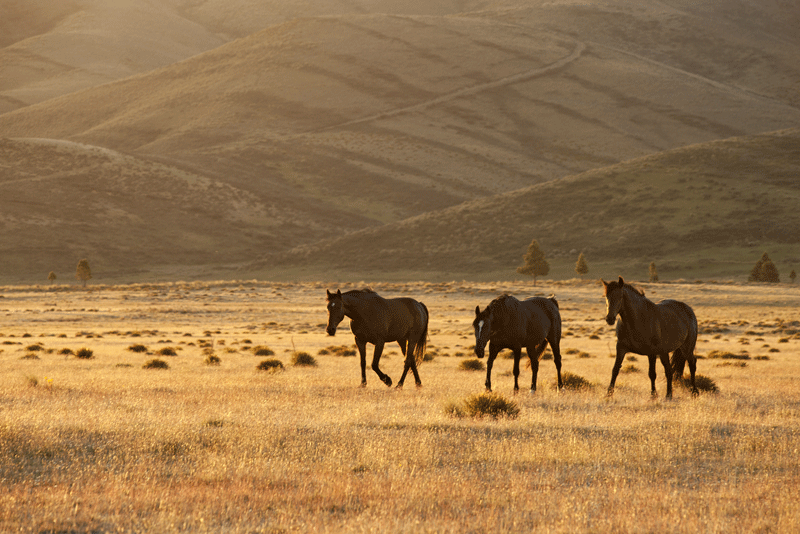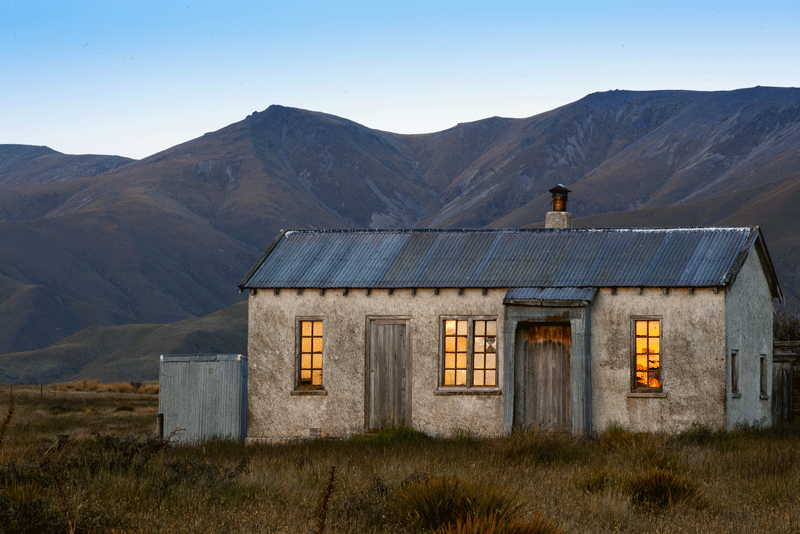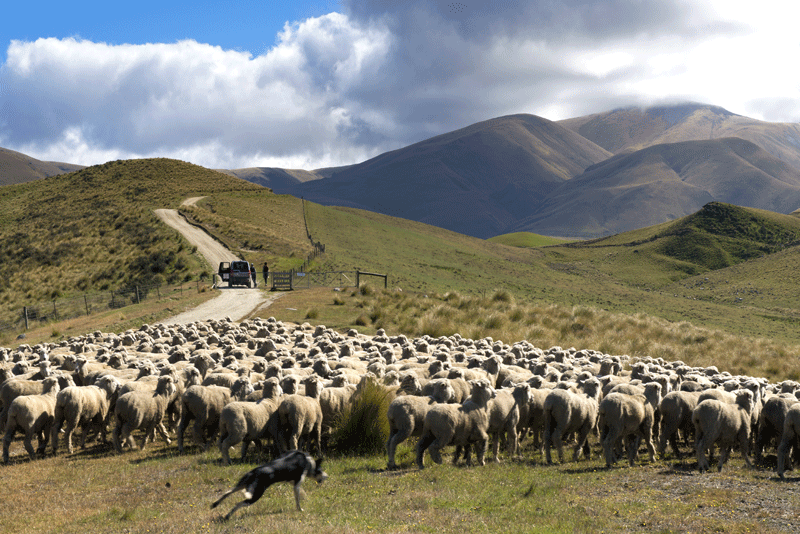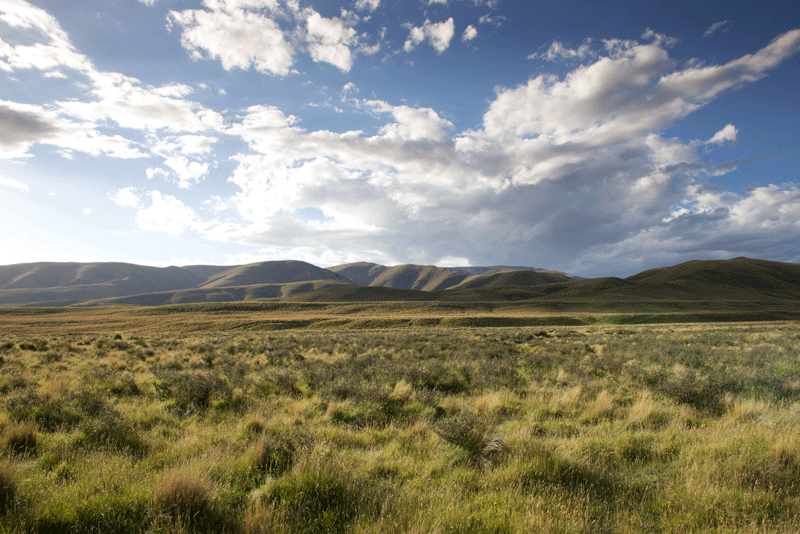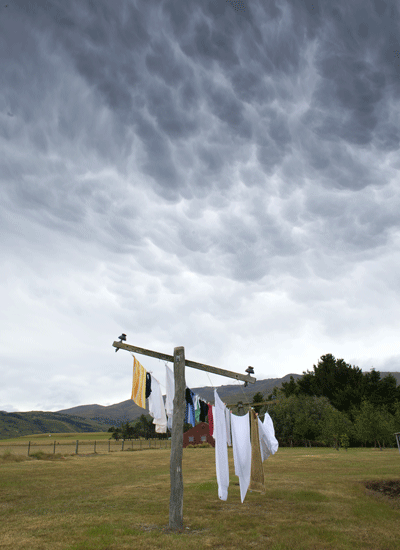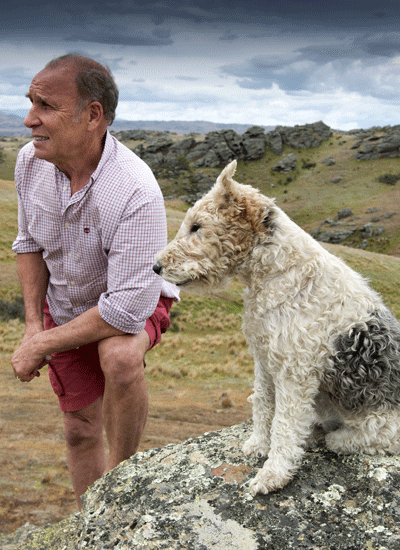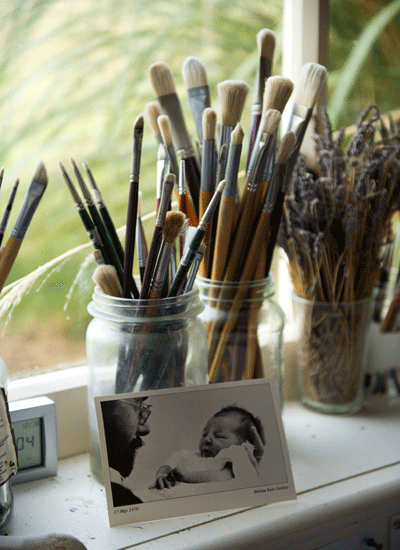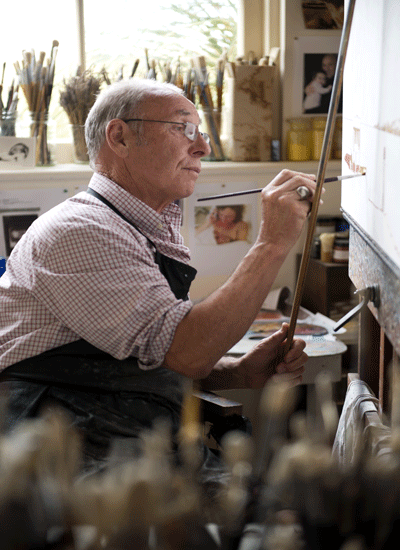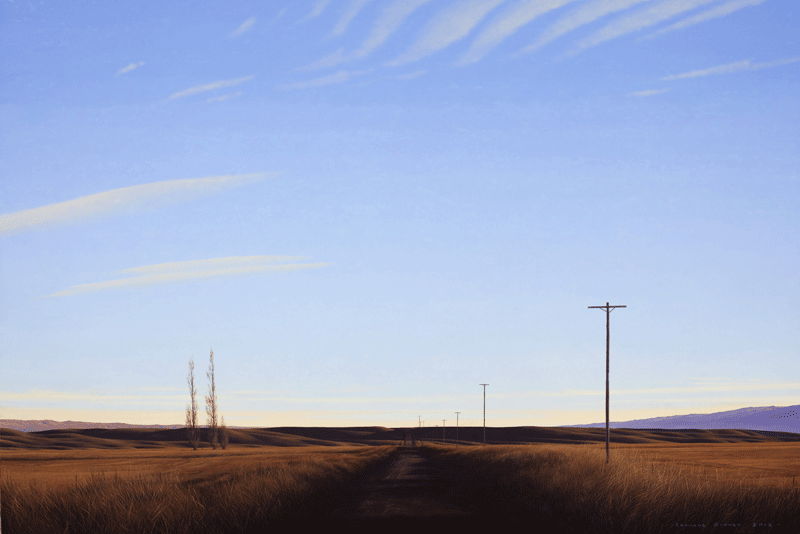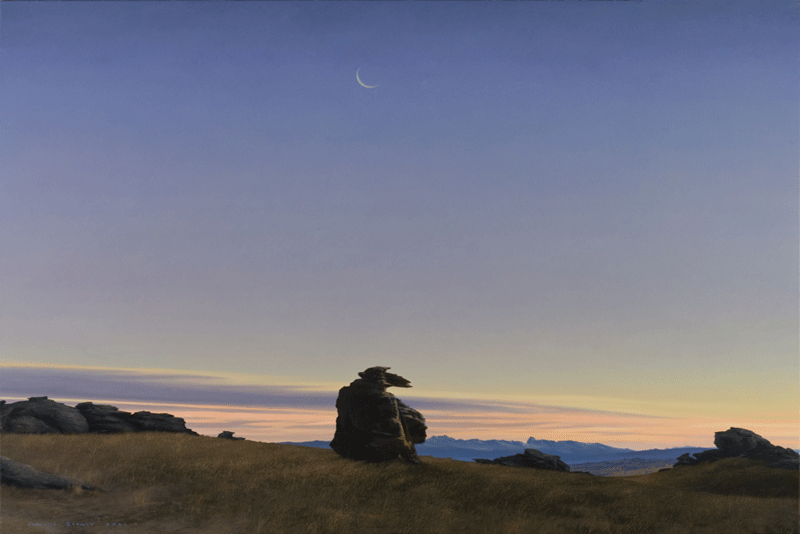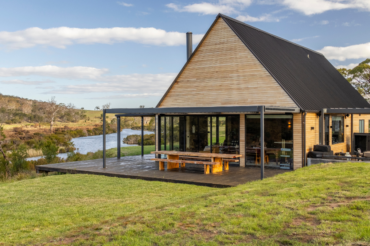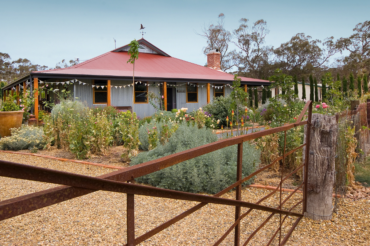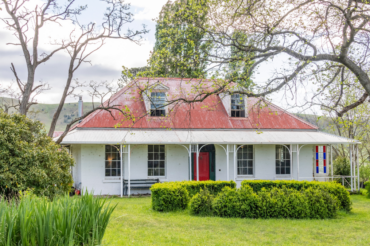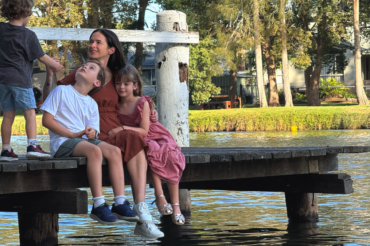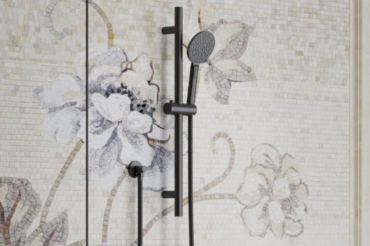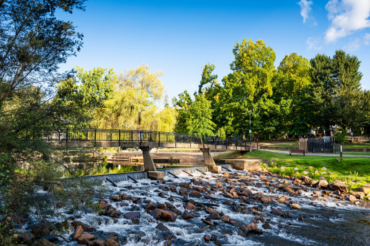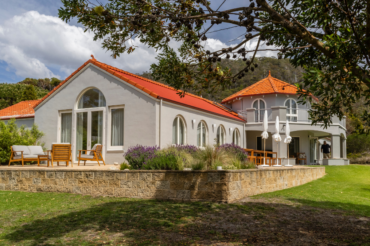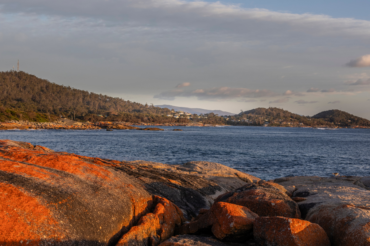The monster silently stands sentinel over an epic landscape of sweeping dull-brown slopes and hills. Its grotesque face with the long snout and the prominent ridge above its deep-set eyes looks west, towards jagged snow-capped mountains. The monster is not alone. Dotted throughout this bleak landscape that is almost devoid of visible human impact are goblins, aliens, gnomes, gargoyles, giants, ogres. If you are blessed with a vivid imagination, you see these creatures, with the changing light of late afternoon, come alive. This is Lord of the Rings country. Not far from here, the Poolburn Reservoir was picked by Peter Jackson as one of the locations for his first Lord Of The Rings movie. Where the monster stands in eternal vigil is called Rough Ridge, an ancient landscape of dry and barren hills in Central Otago on New Zealand’s South Island.
There it caught the eye of one of New Zealand’s most revered artists, Grahame Sydney. His painting, Rock of Ages, features this freakish stone creature, a remarkable schist outcrop, standing in the fading light of the quiet hour, just before the darkness of night swallows the lonely landscape. High above hangs the moon, just a sliver and barely visible. In the far distance, where the real mountains rear, pale-orange light fades with the promise of a clear night and a fine day to follow. Grahame’s eye was not only drawn to the remarkable shape of this ancient eroded geological feature. The monster stood sentinel over much more recent events. “Beside the Old Dunstan Road on Rough Ridge, this monumental tor has been weathering for thousands of years”, he explains in notes on the paintings in his latest book, Grahame Sydney ̶ Paintings 1974-2014“. “Platoons of foot-slogging diggers must have passed it on their long, optimistic trudge to the Dunstan Goldfields in the early 1860s rush, seeing it exactly as we do today.”
Central Otago is Grahame Sydney country. Rough Ridge is part of it. The hills form the south-eastern border of the Ida Valley. Here agricultural use peters out, human impact becomes less prominent. Sheep roam these windswept hills. Their lanolin smell lingers under protected rock shelters. A dirt road and fences make it impossible to call these hills and ridges pristine. But it’s close. Change here happens at a very slow pace. And that is how Grahame Sydney likes it. His recurring artistic topic is the sparsity and harshness of Central Otago’s rain shadow landscape, a monochromatic landscape that seems to sap colours out of everything. Within this desolate land he often finds decrepit, decaying structures that symbolise the human struggle to survive in this hard land. Above this extraordinary land hangs a huge sky. Quite often incredible cloud formations appear on this enormous canvas and add drama. The vegetation is reduced to tussock grass and every now and then patches of prickly, hardy matagouri vegetation. It is a hard land that challenges humans.
The artist, accompanied by his dog, Milo, takes me up to Rough Ridge, to show me one of his favourite places in Central Otago. Before this little excursion, in his studio, he reminisces about the time when he was a young struggling artist with no prospects in his native New Zealand. He embarked on a journey to Europe in the hope to make it as a painter there. “Of course it failed terribly for me because I was so homesick all the time,” he says. “I was so frustrated, depressed and living in a grotty bedsit in some god-awful solemn part of London. My dreams literally were of Maniototo and Central” He’d travelled through these landscapes often before, but never focused on them in his work. “But it haunted me literally in England”, he recalls, “and I came back thinking that I had to do something with that.” And he did. After his return he followed his dreams and started to venture into Central Otago. “I came up to Naseby and did the first drawings which were essentially this revisiting of the London dreams,” he recalls. “Just to see if there was something there for me. It had been my dreamland, you know, rather like that Aboriginal notion of the dreaming, if there is an equivalent then that is mine.”
Since then he has created many iconic paintings of Central Otago scenes. Equipped with a formidable intellect he eloquently and openly speaks about his life, his art, his passions and his self-confessed shortcomings. When it comes to why he feels this overpowering allure to Central Otago however, he seems reluctant. “I never try to work it out,” he says. “I don’t want to spoil that thematic strain by trying to analyse it. You can analyse things to death. I don’t spend any time wondering what it is. All I do is trust the extremely powerful instinct for it and believe there must be something in it for it to be so strong for me. The things I’m trying to protect I now no longer analyse. Essentially I just don’t go there.”
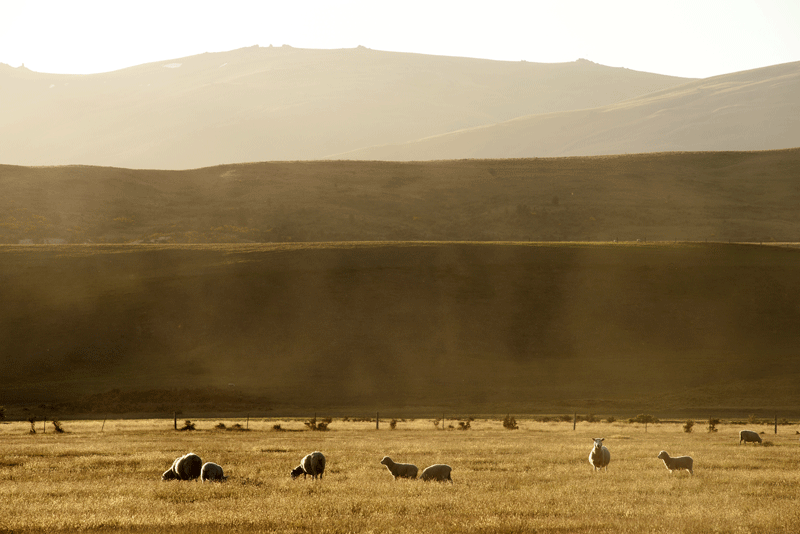
But he eventually does go there, in a roundabout way, attempting a partial answer. “I love the feeling, number one, that in this narrow small nation, surrounded by more water then anywhere else but Iceland, you can find in that tiny country a landscape that seems to be continental”, he says. “The sense of the bigness of the landscape, the expansiveness of it is much more obvious and palpable here than it is anywhere else in New Zealand. That’s one thing I’m aware of. Number two: The magnificence of that landscape diminishes everything human, as it should, especially me.”
Although Grahame Sydney as an artist is quite versatile ̶ his works include photographs, nudes, still lifes as well as books ̶ the bulk of more than 40 years of creativity revolves around Central Otago, the outback of New Zealand. Driving through the region in search of the fabled Grahame Sydney country, I struggle at first to find the landscapes and human features that he has immortalised in his paintings. What I see left and right of the single lane road between the small country towns of Omakau and Ranfurly is a landscape dominated by the colour green. It is a colour that very rarely features in Grahame’s paintings, and never in his Central Otago paintings., number one, that in this narrow small nation, surrounded by more water then anywhere else but Iceland, you can find in that tiny country a landscape that seems to be continental”, he says. “The sense of the bigness of the landscape, the expansiveness of it is much more obvious and palpable here than it is anywhere else in New Zealand. That’s one thing I’m aware of. Number two: The magnificence of that landscape diminishes everything human, as it should, especially me.”
It takes me a while to come to the realisation that Grahame Sydney’s Central Otago is rapidly changing. Copious amounts of fertiliser and the more recent advent of intensive irrigation has transformed once semi-arid valleys into lush pastures, where dairy cattle now peacefully graze. These are scenes unseen not too long ago. Such enormous and rapid changes deeply effect Grahame Sydney. “Sensibly, you’ve got to accept that things always change”, he admits. “And of course, no matter what I think about what is happening to land use it’s not going to make any difference to anyone. It is just a private grief of mine because I think fundamentally nature will always win back. It’s simply unsustainable. Nature will bat last here, but just when, I don’t know. There will come a point where it doesn’t work anymore. That’s an argument I will have to live with losing. One of the sadder aspects of it is that paintings like mine become documents of a lost era. That’s not what you do them for, but they start to play that role and it’s a role that I regret.”
Road South, Maniototo painting, Grahame Sydney, 2012.
Grahame Sydney is a thinker, an intellectual. His outspoken views sometimes put him at odds with some of Central Otago’s farmers. “A lot of people resent the fact that I’m often asked to comment on environmental matters and I usually do say something,” he says. “They get sick and tired of hearing from me so I’m aware some consider me a loony environmentalist, a raging leftie.” He refuses to buy into the philosophy of perpetual growth and questions motives and methods of some of Central Otago’s farmers. “The artificiality of what they have to do to the land here to intensify seems wrong to me,” he adds. “We are not talking about survival, we are talking about the farming community doing better than just survive; they are wanting to make a lot of money, get the maximum out. It’s the reigning attitude of New Zealand towards the land at the moment, the extraction of as much value as possible and to hell with the consequences on landscapes and waterways. It is very sad. Maximising through artificial means, maximising the income from any land with no view whatsoever, in my opinion, of the long-term effects or sustainability. It’s a naturally semi-arid landscape. You are not going to persuade me that in the space of 10 or 20 years by extraordinary mechanical and chemical artifice you are going to transform this into a sustainably lush and rich agricultural landscape. It’s not going to happen.”
Rock of Ages painting, Grahame Sydney, 2012.
Find out more about the man behind the canvas in the June/July issue of Australian Country magazine, available for order and online now!
Words & Photography Don Fuchs

